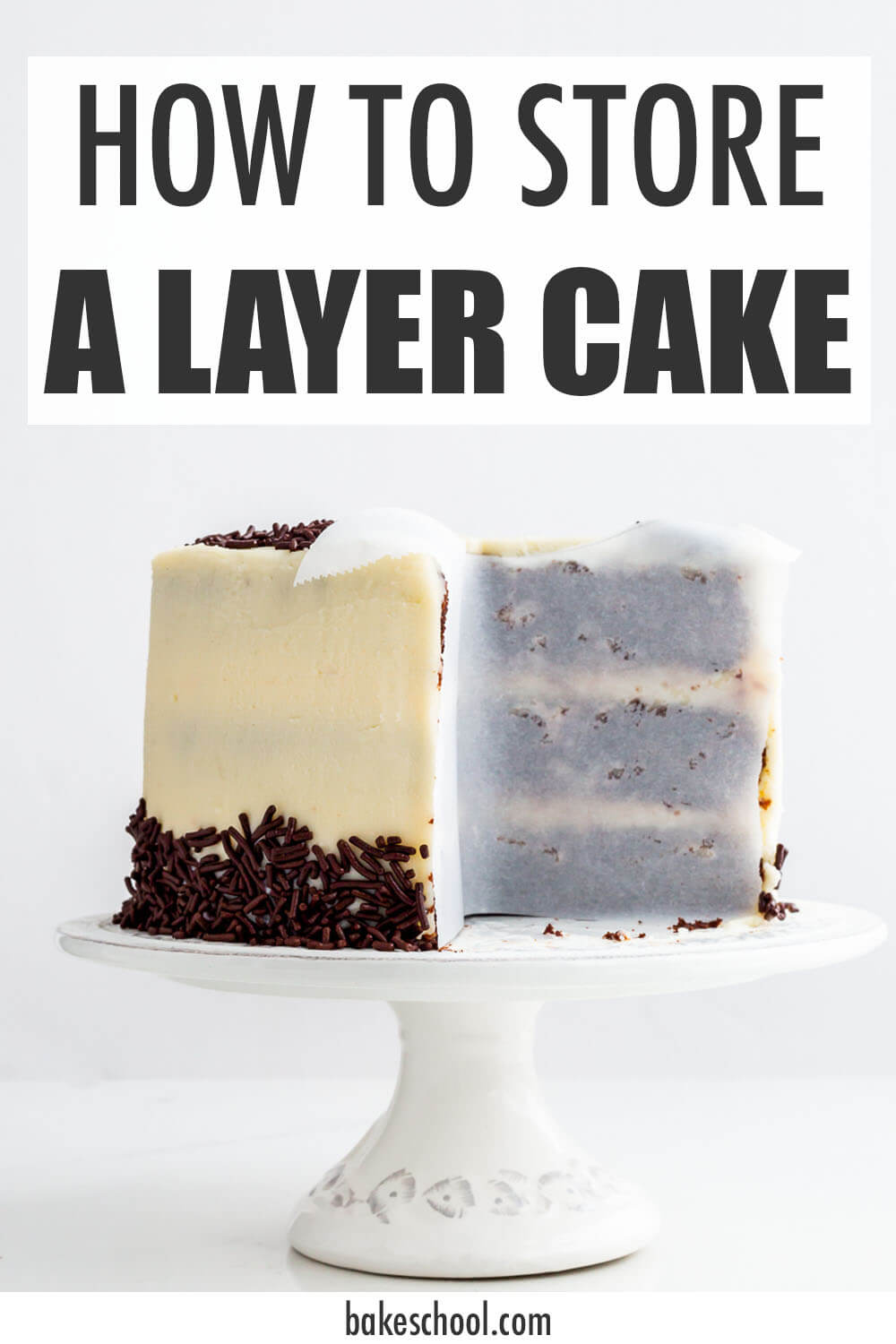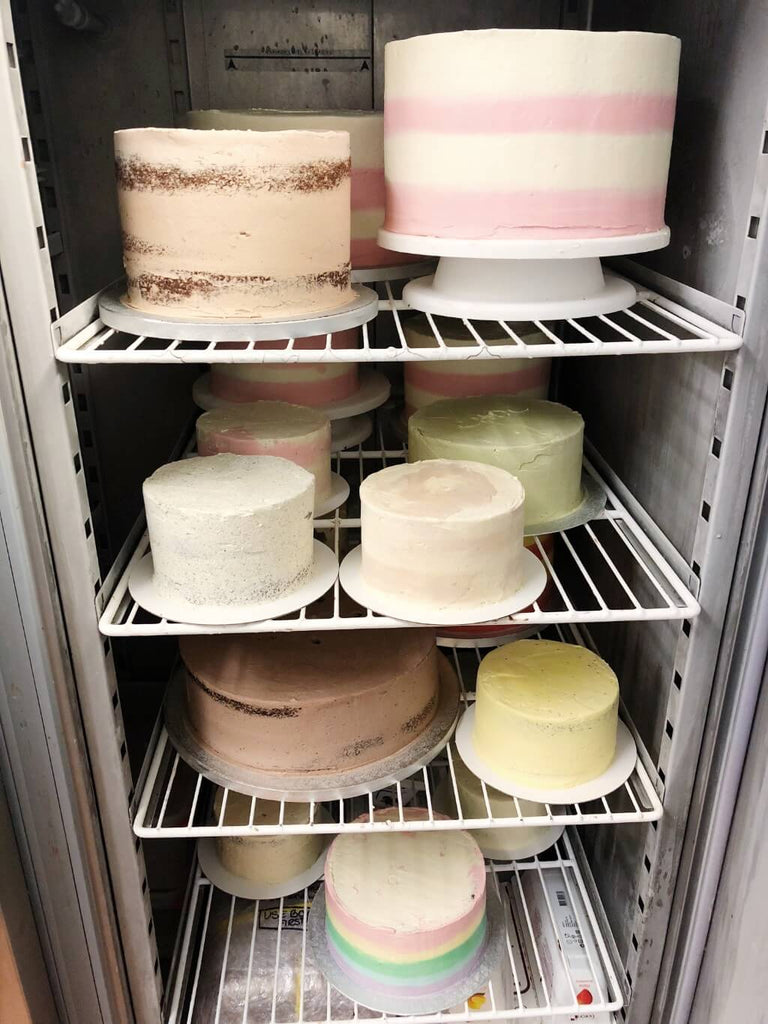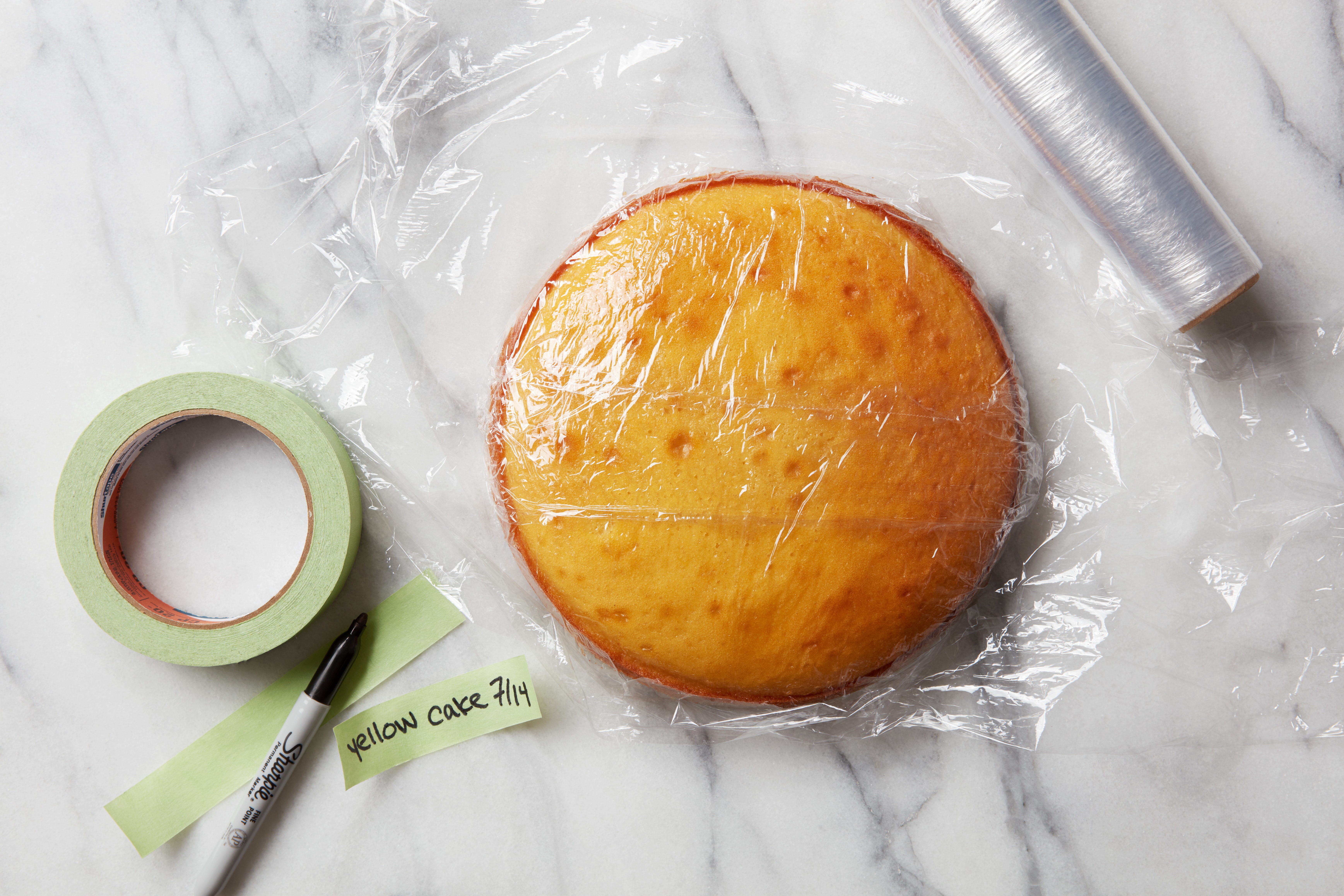
Introduction
Overview Of Cake Storage And Its Importance
Proper cake storage is crucial to maintain the quality, taste, and freshness of a cake. Whether it’s a homemade cake or a store-bought one, correct storage techniques can significantly impact the shelf life of a cake. By storing the cake properly, you can preserve its flavor, texture, and appearance, ensuring that it remains enjoyable for a longer period of time.
Factors Affecting The Shelf Life Of Cake
Several factors influence the shelf life of a cake. Understanding these factors can help you implement the best storage practices for your cake:
- Moisture: Cakes are highly susceptible to moisture absorption, leading to spoilage. The presence of moisture can result in mold growth, staleness, and degradation in taste. It is essential to store cakes in a dry environment to prevent moisture absorption.
- Temperature: The storage temperature plays a vital role in determining the shelf life of a cake. Most cakes should be stored at cool room temperature (around 60-65°F/15-18°C) to maintain their texture and freshness. Extreme temperatures, such as high heat or freezing cold, can negatively affect the cake’s quality.
- Air exposure: Exposure to air can lead to the drying out of the cake. To prevent this, it is important to cover the cake properly, preferably with plastic wrap or a cake container with a tight-fitting lid, to minimize air contact.
- Handling: The way the cake is handled during storage can affect its shelf life. Rough handling or placing heavy objects on top of the cake can cause deformation or damage. It is advisable to handle cakes with care and ensure they are stored in a stable position.
- Ingredients: Certain ingredients used in cakes, such as fresh fruits or dairy products, can affect the cake’s shelf life. Cakes containing perishable ingredients should be stored in the refrigerator to prevent spoilage.
By considering these factors and implementing proper storage techniques, you can extend the shelf life of your cake, preserving its flavor and quality for longer periods.
How To Store Cake In The Fridge
Proper Techniques For Storing Cake In The Fridge
When it comes to storing cake in the fridge, there are a few techniques you can follow to ensure its freshness and quality:
- Allow the cake to cool completely before storing it. Trying to store a warm cake can result in condensation, which can make the cake soggy.
- Wrap the cake tightly in plastic wrap or place it in an airtight container. This will help prevent moisture from seeping into the cake and keep it fresh.
- If you need to store a layer cake, it’s best to remove any frosting or decorations before refrigerating. This will prevent them from getting smushed or becoming too soft.
- Place the wrapped or containerized cake in the fridge. It’s important to find a spot where the cake will not be jostled or have heavy items placed on top of it, as this can cause damage.
- Keep the cake away from strong-smelling foods in the fridge, as it can absorb their odor and affect its flavor.
Choosing The Right Container For Cake Storage
The container you use for storing cake in the fridge is crucial for maintaining its freshness. Here are some tips for choosing the right container:
- Opt for an airtight container with a tight-fitting lid. This will help keep out air and prevent the cake from drying out.
- If you don’t have an airtight container, you can use aluminum foil to tightly cover the cake.
- Make sure the container is clean and dry before placing the cake inside. Any leftover crumbs or moisture can lead to mold growth or spoilage.
- Consider the size of the container. Ideally, it should be slightly larger than the cake to prevent it from getting squished.
- Transparent containers are preferred, as they allow you to see the cake without having to open the lid and expose it to air.
By following these proper techniques and choosing the right container, you can ensure that your cake stays fresh and delicious when stored in the fridge. Remember to consume the cake within the recommended storage period to enjoy it at its best.
How Long Can Cake Last In The Fridge
Factors That Determine The Shelf Life Of Cake In The Fridge
The length of time a cake can last in the fridge depends on various factors, including:
- Quality of ingredients used: Cakes made with fresh and high-quality ingredients tend to have a longer shelf life.
- Type of cake: Different types of cakes have different moisture levels and ingredients, which can affect their longevity in the fridge.
- Storage conditions: Properly storing the cake in an airtight container and at the right temperature can help extend its shelf life.
- Frosting or filling: Cakes with perishable fillings or frostings may not last as long in the fridge compared to cakes with stable fillings or frostings.
Recommended Timeframes For Storing Different Types Of Cake
While the exact shelf life of a cake in the fridge can vary, here are some general guidelines:
- Buttercream or frosted cakes: These cakes can typically be stored in the fridge for 3-5 days without significant changes in taste or texture.
- Cream-filled or custard-filled cakes: These cakes should be consumed within 2-3 days to avoid spoilage or a change in flavor.
- Cheesecake: Cheesecakes can last in the fridge for 5-7 days, but it’s important to cover them tightly to prevent drying out.
- Fruit cake: Fruit cakes can have a longer shelf life and can be stored in the fridge for 1-2 weeks if properly wrapped in plastic wrap or placed in an airtight container.
- Sponge or chiffon cake: These types of cakes tend to have a shorter shelf life and should ideally be consumed within 2-3 days.
Remember to always check the cake for any signs of spoilage, such as mold or an off smell, before consuming it. If in doubt, it’s best to discard the cake to avoid any potential foodborne illnesses.
Signs Of Spoiled Cake
Identifying Visual Cues And Odor Changes In Spoiled Cake
When it comes to storing cake in the fridge, it’s important to be able to identify the signs of spoilage. Here are some visual cues and odor changes that may indicate that a cake has gone bad:
- Mold: If you notice any visible mold growth on the cake, it is a clear sign that it has spoiled and should not be consumed.
- Discoloration: A cake that has started to change color or develop dark spots may indicate that it has gone bad.
- Unpleasant smell: If the cake emits a strong or unpleasant odor, it is likely no longer fresh and may have spoiled.
- Texture changes: Spoiled cake may become dry, sticky, or develop a slimy texture.
- Frosting or filling changes: If the frosting or filling on the cake appears watery, separated, or has an off taste, it may have spoiled.
Potential Health Risks Associated With Consuming Spoiled Cake
Consuming spoiled cake can potentially lead to foodborne illnesses. Bacteria and mold can grow on the cake, producing harmful toxins that may cause food poisoning symptoms.
Common symptoms of food poisoning include nausea, vomiting, diarrhea, stomach cramps, and fever. In severe cases, it can lead to dehydration and other potentially serious complications.
To avoid these health risks, it is always best to err on the side of caution and discard a cake that shows signs of spoilage. It is not worth risking your health for a slice of cake that may be past its prime.
Remember that these guidelines are general and may vary depending on factors such as ingredients used, storage conditions, and individual sensitivities. When in doubt, trust your instincts and prioritize your health and safety.

Extending The Shelf Life Of Cake
Tips And Tricks To Prolong The Freshness Of Cake
When it comes to storing cake in the fridge, there are some steps you can take to extend its shelf life and keep it fresh for longer. Here are some tips and tricks:
- Wrap it properly: To prevent the cake from drying out, make sure to wrap it tightly in plastic wrap or use an airtight container. This will help to seal in the moisture and maintain the cake’s freshness.
- Store in the right temperature: The ideal temperature for storing cake is between 32°F to 40°F (0°C to 4°C). Avoid placing the cake in the coldest part of the fridge, as this can cause it to become dry. Instead, store it on a middle shelf where the temperature is more consistent.
- Avoid exposure to air: Air can cause the cake to dry out quickly, so it’s important to minimize exposure. If using plastic wrap, make sure it is tightly sealed. If using an airtight container, ensure the lid is securely closed.
- Keep away from strong-smelling foods: Cakes can easily absorb odors from other foods in the fridge. To avoid this, store the cake on a separate shelf away from strong-smelling ingredients like onions or garlic.
- Freeze it: If you don’t plan on consuming the entire cake within a few days, consider freezing it. Wrap the cake well in plastic wrap and place it in a freezer bag or airtight container. Frozen cake can last for several months when stored properly.
Using Different Preservation Methods
In addition to refrigeration, there are other preservation methods you can try to extend the shelf life of your cake:
| Method | Description |
|---|---|
| Vacuum sealing | Using a vacuum sealer to remove air and seal the cake can significantly prolong its freshness. |
| Freeze drying | This method involves freeze-drying the cake, which removes moisture and helps to preserve the texture and flavor. |
| Cake preserver | A cake preserver is a specialized container designed to keep cakes fresher for longer. It helps to maintain humidity levels and protect the cake from air exposure. |
| Sugar syrup soaking | Brushing the cake layers with a sugar syrup can help to keep them moist and prevent dryness. |
| Fondant covering | If you’re skilled in cake decorating, covering the cake with fondant can help to seal in moisture and prevent it from drying out. |
By following these tips and exploring different preservation methods, you can prolong the freshness of your cake and enjoy it for a longer period of time. Just remember to always check for any signs of spoilage before consuming.
Freezing Cake For Long-term Storage
Benefits Of Freezing Cake For Extended Shelf Life
Freezing cake is an effective way to extend its shelf life and ensure it stays fresh for longer. There are several benefits to freezing cake:
- Preserves freshness: Freezing cake helps to lock in moisture and prevent it from drying out. This means that when you thaw the cake, it will still be moist and delicious.
- Convenient storage: Freezing cake allows you to have homemade treats on hand whenever you want them. You can simply take a slice or two out of the freezer and enjoy it without any hassle.
- Prevents waste: If you have leftover cake or if you made a large batch for a special occasion, freezing it can prevent waste. You can save the cake for later and enjoy it whenever you have a craving.
Step-by-step Guide To Freezing Cake Properly
To freeze cake properly and ensure it retains its quality, follow these steps:
- Let the cake cool completely: Before freezing, make sure the cake is completely cool to prevent condensation from forming inside the packaging.
- Wrap it well: Wrap the cake tightly in several layers of plastic wrap to protect it from freezer burn. Alternatively, you can place the cake in a freezer-safe bag or airtight container.
- Label and date: Don’t forget to label the packaging with the name of the cake and the date it was frozen. This will help you keep track of how long it has been in the freezer.
- Freeze on a flat surface: Place the wrapped cake on a flat surface, such as a baking sheet, and place it in the freezer. This will help it maintain its shape during freezing.
- Store properly: Once the cake is frozen and firm, you can transfer it to a more compact space in the freezer, such as a freezer bag or airtight container.
- Thawing process: When you’re ready to enjoy the cake, remove it from the freezer and let it thaw in the refrigerator overnight. This slow thawing process helps retain its moisture.
- Enjoy within a reasonable time: While frozen cake can last for several months, it’s best to consume it within 3-4 months for the best quality.
By following these steps, you can freeze cake properly and enjoy it for an extended period of time. Just remember to package it well and make sure it’s thawed properly before serving.
Thawing Frozen Cake
Safe Methods For Thawing Frozen Cake
When it comes to thawing frozen cake, there are a few safe methods you can choose from:
- Refrigerator thawing: The best and safest way to thaw frozen cake is to transfer it from the freezer to the refrigerator and let it thaw overnight. This slow thawing process helps retain the cake’s moisture and ensures even thawing.
- Room temperature thawing: If you’re in a bit of a rush, you can also thaw the cake at room temperature. Simply remove the wrapped cake from the freezer and let it sit at room temperature for a few hours, or until fully thawed. However, keep in mind that this method may cause the cake to dry out slightly.
- Microwave thawing: If you need to thaw the cake quickly, you can use the microwave. Before microwaving, remove the cake from any plastic packaging and place it on a microwave-safe plate. Use the defrost setting or low power setting, and check the cake frequently to prevent it from becoming dry or overheated.
Precautions To Avoid Moisture Loss And Texture Alterations
While thawing frozen cake, it’s important to take certain precautions to preserve its quality:
- Avoid moisture loss: To prevent moisture loss during thawing, it’s crucial to keep the cake covered with plastic wrap or in an airtight container. This will help retain its moisture and prevent it from drying out.
- Don’t refreeze: Once you’ve thawed the cake, it’s not recommended to refreeze it. Repeated freezing and thawing can affect the texture and taste of the cake.
- Allow time for temperature adjustment: After thawing, give the cake some time to adjust to room temperature before serving. This will allow the flavors to develop fully and ensure the cake is at its best.
By following these safe thawing methods and taking the necessary precautions, you can ensure that your frozen cake retains its moisture and texture, resulting in a delicious treat.

Reviving Stale Cake
Techniques For Reviving Dry Or Stale Cake
If you find yourself with a dry or stale cake on hand, don’t worry! There are a few techniques you can use to revive it:
- Simple syrup method: For dry cakes, a simple syrup can help add moisture and improve the texture. To make a simple syrup, combine equal parts sugar and water in a saucepan and heat until the sugar dissolves. Once the syrup has cooled, brush it onto the cake layers using a pastry brush.
- Steam method: Another way to revive a dry cake is by using steam. Fill a large pot with water and bring it to a simmer. Place a cooling rack over the pot and put the cake on top. Cover the pot with a lid and let the steam from the simmering water moisten the cake for about 10 minutes.
- Fruit or cream filling: If your cake is slightly dry, adding a fruit or cream filling between the layers can help moisten it. The filling will provide additional moisture and enhance the overall taste and texture of the cake.
Enhancing Flavor And Texture Using Simple Methods
Aside from reviving the moisture in the cake, you can also enhance its flavor and texture with a few simple methods:
- Whipped cream: Adding a layer of whipped cream on the cake can not only improve the flavor but also add moisture. You can also incorporate flavors like vanilla or chocolate into the whipped cream for an extra burst of taste.
- Fresh fruit: Fresh fruit slices or berries can bring a refreshing element to the cake and provide a juicy texture. You can arrange the fruit on top of the cake or incorporate it into the filling layers.
- Chocolate ganache: Drizzling a smooth and glossy chocolate ganache over the cake can make it more decadent and moist. The ganache will add a rich flavor and a velvety texture to the cake.
With these techniques and simple methods, you can revive and transform a dry or stale cake into a delicious dessert that will impress your guests.
Reviving Stale Cake
Techniques For Reviving Dry Or Stale Cake
If you find yourself with a dry or stale cake on hand, there are a few techniques to revive it:
- Simple syrup method: To add moisture and improve texture, make a simple syrup by combining equal parts sugar and water in a saucepan. Heat until the sugar dissolves, then cool and brush onto the cake layers.
- Steam method: Place the cake on a cooling rack over a pot of simmering water. Cover the pot with a lid and steam the cake for about 10 minutes to moisten it.
- Fruit or cream filling: Adding a fruit or cream filling between the layers can moisten a slightly dry cake and enhance its taste and texture.
Enhancing Flavor And Texture Using Simple Methods
In addition to reviving moisture in the cake, you can improve its flavor and texture with these simple methods:
- Whipped cream: Spread a layer of whipped cream on the cake to improve flavor and add moisture. You can also incorporate vanilla or chocolate flavors into the whipped cream.
- Fresh fruit: Adding fresh fruit slices or berries to the cake provides a refreshing element and a juicy texture. Arrange the fruit on top of the cake or incorporate it into the filling layers.
- Chocolate ganache: Drizzle a smooth and glossy chocolate ganache over the cake to make it more decadent and moist. The ganache adds a rich flavor and velvety texture.
Conclusion
Summary Of Key Points Discussed
In this blog post, we discussed techniques for reviving dry or stale cake, including using a simple syrup or steam method, or adding fruit or cream filling. We also explored how to enhance the flavor and texture with whipped cream, fresh fruit, and chocolate ganache.
Final Thoughts On Storing Cake For Optimal Freshness
When it comes to storing cake for optimal freshness, it is always best to store it in an airtight container in a cool, dry place. To prevent drying out, consider wrapping individual cake slices in plastic wrap before storing in the refrigerator. If your cake does become stale, you can use the techniques mentioned to revive it and transform it into a delicious dessert.
Frequently Asked Questions: How Long Does Cake Last in the Fridge?
Q: How long can I keep a cake in the fridge before it goes bad?
A: The duration a cake lasts in the fridge varies depending on various factors. Generally, a properly stored cake can last for 3-5 days in the refrigerator while maintaining its quality and taste.
Q: Can I leave a cake out at room temperature instead of refrigerating it?
A: Cakes with certain ingredients, such as cream cheese or fresh fruit fillings, should be refrigerated to prevent spoilage. However, if the cake doesn’t have perishable fillings or frostings, it can be left at room temperature for a day or two.
Q: How do I store a cake in the fridge to keep it fresh for longer?
A: To ensure optimal freshness, follow these steps:
- Allow the cake to cool completely before storing it.
- Wrap the cake tightly with plastic wrap or aluminum foil to prevent it from drying out and absorbing odors from other foods.
- Place the wrapped cake in an airtight container or cake carrier to provide an additional layer of protection.
- Keep the cake on a flat shelf in the refrigerator to avoid any damage or shifting during storage.
Q: Can I store a cake in the fridge without wrapping it?
A: It is not recommended to store a cake in the fridge without proper wrapping as it can dry out quickly or absorb odors from other foods. Wrapping the cake tightly with plastic wrap or aluminum foil helps retain moisture and preserve its flavor.
Q: How can I tell if a refrigerated cake has gone bad?
A: Signs of a spoiled cake include a sour or off smell, mold growth, changes in texture (such as becoming excessively dry or sticky), or a strange taste. If you observe any of these signs, it is best to discard the cake to avoid foodborne illnesses.
Q: Can I freeze a cake to extend its shelf life even further?
A: Yes, freezing a cake can extend its shelf life for up to two to three months. Wrap the cake in multiple layers of plastic wrap or aluminum foil, ensuring it is tightly sealed to prevent freezer burn. When ready to consume, allow the cake to thaw in the refrigerator before serving.
Q: Does the type of cake affect its shelf life in the fridge?
A: Yes, the type of cake can influence its shelf life. Cakes with perishable fillings or frostings, such as a cream cake or a cake with fresh fruit toppings, tend to have a shorter shelf life in the fridge compared to plain sponge cakes or butter cakes. Always refer to specific recipes or consult with a pastry chef for expert advice.
Remember, proper storage and handling are crucial for maintaining the freshness and taste of your cake. When in doubt, use your best judgment and if it looks or smells off, it’s better to be safe than sorry and discard it.

Sweet Delights Bakery, Inc. is a beloved establishment that has captured the hearts and taste buds of customers across the nation. Voted America’s #1 Pie by Business Insider and named Florida’s Best Bakery by BuzzFeed, Sweet Delights Bakery, Inc. has established itself as a premier destination for irresistible treats and delectable desserts.Founded with a passion for creating exceptional baked goods, Sweet Delights Bakery, Inc. has been serving up a wide array of mouthwatering pies, pastries, and confections since its inception. With a commitment to using only the finest ingredients and time-honored recipes, the bakery has earned a stellar reputation for delivering unparalleled flavor and quality in every bite.